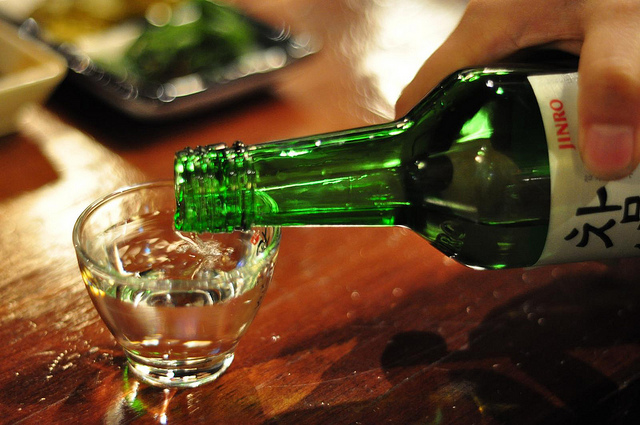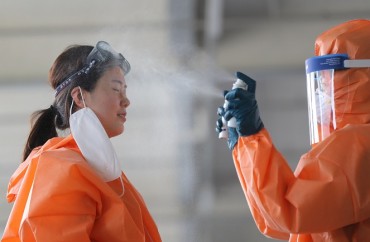
The results showed that soju had the best germ-reduction effect, at 95 percent. (image: Flickr/ Graham Hills)
DAEJEON, June 6 (Korea Bizwire) – You might want to try soju (Korean rice wine) to wash your vegetables next time.
A recent experiment unveiled soju’s unexpected ability to wash off germs and bacteria from produce like lettuce. The research was conducted by the Daejeon Institute of Health and Environment, and various produce cleaning products were used to observe the reduction of germs and bacteria.
The team researched products that can be easily used in regular household environments, including soju, vinegar, vegetable cleanser, baking soda, citric acid, sodium hypochlorite solution and tap water.
An average of 479 CFU of germs and 30,900 CFU of coliform bacteria per 1 gram of samples were discovered. Colon bacilli were only discovered in 7.9 percent of the samples. CFU is an abbreviation for ‘colony-forming unit’, used to estimate the number of viable bacteria or fungal cells in a sample.
The results showed that soju had the best germ-reduction effect, at 95 percent. It was followed by citric acid and vinegar (94.1 percent), sodium hypochlorite solution (93.3 percent), vegetable cleanser (86.9 percent), and baking soda (82.9 percent). Tap water, which is commonly used for vegetable cleaning at restaurants and homes, only had an effectiveness of 64.7 percent.
For the coliform bacteria, sodium hypochlorite solution (97.5 percent) was most effective, followed by soju (96.6 percent), vinegar (95.8 percent), citric acid (94.88 percent), and vegetable cleanser and baking soda (88 percent). Tap water showed a reduction of 75.4 percent.
No colon bacilli were found in all samples after cleansing.
“We wanted to experiment with methods for dealing with contamination of fresh produce, which is often directly consumed without heating or much cooking,” said an institute official. “It’s a useful tip that can help maintain both the quality and safety of fresh vegetables.”
By Joseph Shin (jss539@koreabizwire.com)






